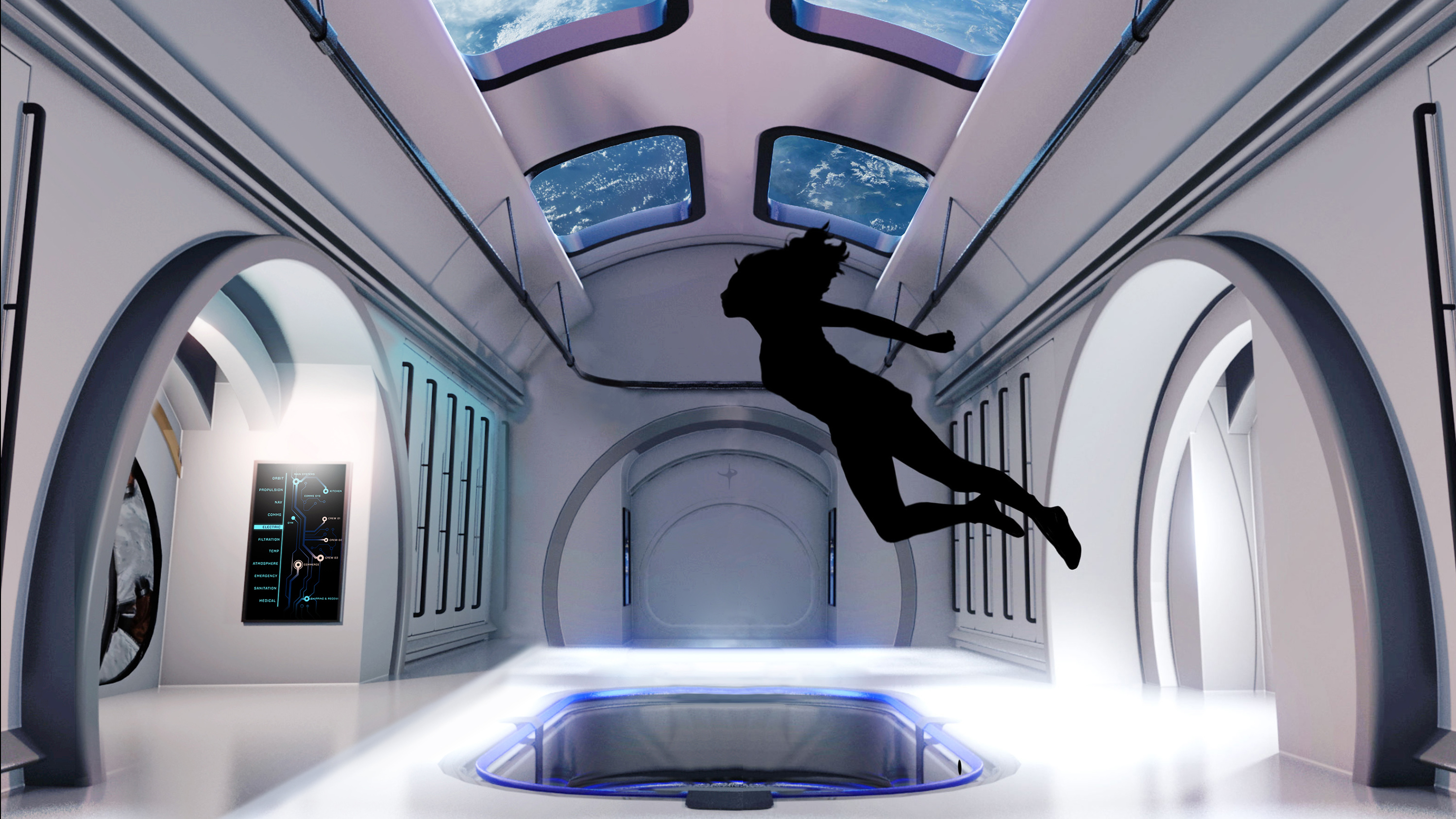Private space stations are coming. Here's what NASA astronauts want to see
"I certainly hope that future space stations are cutting edge laboratories," Mark Vande Hei said.

Two NASA astronauts in space right now have some ideas about what the future may hold in low-Earth orbit (LEO), and what they hope to see in a commercial space station.
Soon, Earth's orbit could be home to commercial space stations and private outposts hosting a new age of spaceflight and exploration. (Currently, astronauts live only in the International Space Station and China's Tiangong core module). In a recent live call from Space.com to the International Space Station, NASA astronauts Mark Vande Hei and Megan McArthur shared their thoughts on what they hope commercial space stations might one day look like when compared to their current home in orbit.
"The space station is a cutting edge laboratory," Vande Hei told Space.com. "So I certainly hope that future space stations are cutting edge laboratories as well."
Related: NASA wants to help private space stations get off the ground
Blue Origin, along with partners including Boeing and Sierra Space, recently announced its plans to build a private space station called Orbital Reef, an orbiting outpost for everyone from government entities to space tourists and Earthling businesses. "We will expand access, lower the cost, and provide all the services and amenities needed to normalize spaceflight," he added. "A vibrant business ecosystem will grow in low Earth orbit, generating new discoveries, new products, new entertainments and global awareness," Blue Origin said about the news in a statement.
This news came soon after NASA Administrator Bill Nelson shared that he expects the International Space Station will likely be replaced by commercial space stations once the 23-year-old orbiting lab is retired. This could happen as early as 2024, though Nelson has said he thinks that the station could last until 2030. NASA also recently took steps to support future commercial space stations in LEO by soliciting feedback on its current plans and holding an online briefing for space industry partners about how LEO might be commercialized.
Like many travelers on Earth eyeing a perfect hotel, Vande Hei and McArthur have a good idea of what professional astronauts might need aboard future commercial space stations.
Breaking space news, the latest updates on rocket launches, skywatching events and more!
Vande Hei emphasized that any new space station must remain a "cutting edge laboratory." McArthur agreed, adding that it's important "to keep our research capabilities updated and current, we always want to have that."
She added that "for sure we always want to have some beautiful windows to be able to look back at the planet. That's one of our favorite pastimes really when we have downtime is, of course, to look at the planet or any planet that we might be orbiting."
And looking at the Earth from space is not just fun and games, McArthur added.
"But also we use those photographs and we use those capabilities to do research as well so there's long-term observations of the Earth that occur that scientists on Earth will use those data to do their own research studies," she added.
"As far as something to improve," Vande Hei said, "we've got a lot of capabilities up here, both for habitation and work, but they are kind of mixed up all over the place." Commercial space stations have a chance to do it better, he added.
"For example," Vande Hei said, "for the most [part] crew members, our sleeping areas are in the middle of a transportation hub, if you imagine a highly traveled corridor. Same thing for where someone who runs on a treadmill and where someone does a resistant exercise training."
So if you're working, you have to squeeze past your exercising crewmates, and if you're working out, you've got people floating by, he explained.
"So, ideally, we'd kind of have a work area and then maybe off to the far reaches of the station there'd be a place to sleep. And maybe all of the exercise equipment would be consolidated and not someplace that people have to transit through when they're working."
Email Chelsea Gohd at cgohd@space.com or follow her on Twitter @chelsea_gohd. Follow us on Twitter @Spacedotcom and on Facebook.

Chelsea “Foxanne” Gohd joined Space.com in 2018 and is now a Senior Writer, writing about everything from climate change to planetary science and human spaceflight in both articles and on-camera in videos. With a degree in Public Health and biological sciences, Chelsea has written and worked for institutions including the American Museum of Natural History, Scientific American, Discover Magazine Blog, Astronomy Magazine and Live Science. When not writing, editing or filming something space-y, Chelsea "Foxanne" Gohd is writing music and performing as Foxanne, even launching a song to space in 2021 with Inspiration4. You can follow her on Twitter @chelsea_gohd and @foxannemusic.
